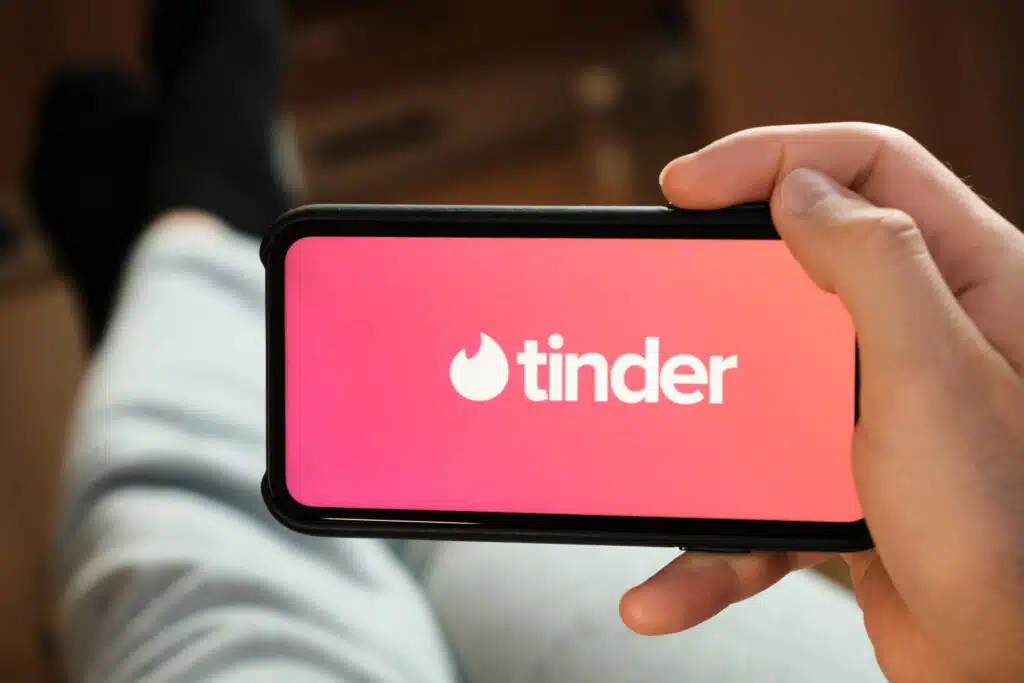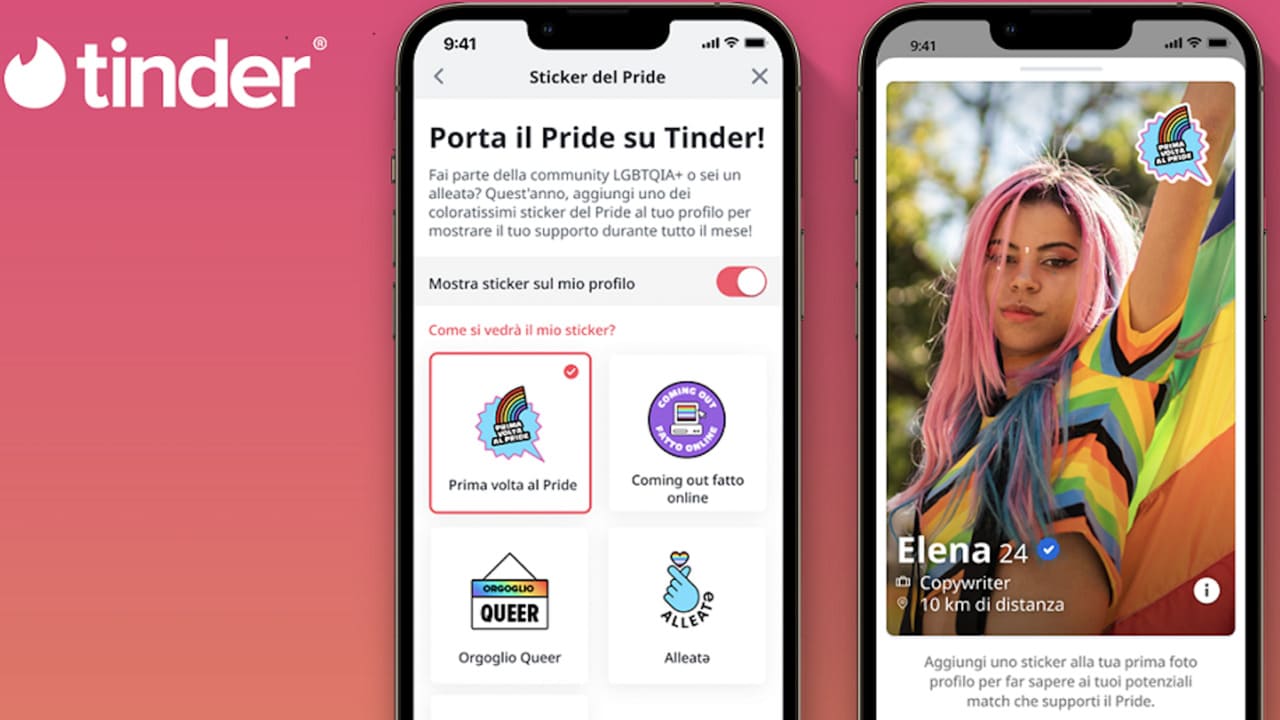In the month of Pride, Tinder – the most famous app in the world for meeting new people – is confirmed as a safe space in which to feel completely free to embrace all forms of love and express yourself in an authentic way. In fact, more than half of queer 18-25 year olds (54%) come out on dating apps even before they do it to family and friends. For this reason, the dating app has launched Bring Pride to Tinder!, a function that allows you to insert a series of thematic badges on your profile on the occasion of the rainbow month.
Bring Pride to Tinder!: thematic badges to support the rainbow community
This year, Tinder encourages members to embrace all forms of love and make genuine connections during Pride, giving them the chance to add thematic badges to your profile to show their support for the LGBTQIA+ community throughout the month. Members will be able to choose between:
- First time at Pride: going to the Pride parade can seem disorienting if it’s your first time. This sticker was designed to help those who participate in their first Pride to get to know other people and not participate alone.
- Coming out fatto online: a very important badge for the community, especially for those who decide to take this first step online.
- Queer Pride: whether online or IRL, it is essential to ensure a space that ensures that strong sense of acceptance and belonging to the community.
- Happy Pride: Pride is a celebration for everyone, whether you’ve come out online or in real life.
- An allya: whether one is part of the community or not, allying and supporting gains a very important value when referring to the queer community and is something to be celebrated.
The badges have been available on Tinder since June 1st. Members can see the section Bring Pride to Tinder! and add the sticker to their profile by selecting the option “Notifications in app”.
Bring Pride to Tinder!: how the concept of dating has changed
For this reason, Tinder offers all its members, regardless of sexual orientation, the opportunity to express themselves freely, adapting to the new dating habits of Generation Zeta. For today’s youth the idea of committing to a relationship is no longer the same as it was before. Also the very concept of “dating” has changed, it is more fluid and inclusive. In fact, as reported by the report, the new generations have become much more open about their sexuality and gender identity (33%) than in the past. For young Tinder members, serious relationships can take on many facets, from monogamous to open relationships to situationships.
For this reason, Tinder has introduced several features over the years to meet the needs of the new generation. One of these is Relationship Type, thanks to which members can indicate the type of relationship they are interested in by choosing between: rmonogamous relationships, open relationships, ethical non-monogamy, polyamory or any type of relationship. While 52% of young members admit they still prefer monogamy, 41% say they are open to or looking for non-monogamous relationships, a clear sign that relationships and love are taking on ever more diverse forms.

Tinder celebrates the various forms of love: the comment of Asja Tilotta
But what does it mean to “love” nowadays? To answer this question, Tinder sought the opinion of Asya Tilottaa medical graduate and sex educator who, through her social channels, invites the community to speak openly about their identity.
“Let’s start from monogamy: a form of relationship in which two people have an exclusive relationship (sentimental and sexual), explains Asja. “But is it really the only relationship option that can make us happy? The answer is no! There is, in fact, an ethical alternative to this type of relationship: le ethical non-monogamy or consensual, or all those types of relationship other than monogamy! The term “consensual” refers precisely to this: the consent of all the people involved in the relationship must be the basis of everything. You will know that, if I want, I will have meetings or relationships with other people, just as I will know that you, if you want, will do the same thing. But be careful: not always adopting the relational style of consensual non-monogamy means being “engaged” to several people at the same time. There are so many types of non-consensual monogamy!”
“In these types of relationships,” adds Asja, “the communication and the consent they are the basis of everything. If consent has been given to the opening of the couple, even in the absence of the partner, then at this point we will talk about open relationship or couple. It’s about two people who are together, with sentimental exclusivity, but who agree to the idea that the partner can have sexual encounters with other people, even independently!” she concludes.















Leave a Reply
View Comments